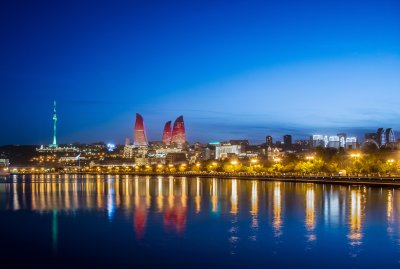 The largest lake on the planet is located in Asia, it is the Caspian Sea, which has oceanic geological origins, in fact in the Mesozoic it extended west to the Black Sea, with which it formed a single basin.
The largest lake on the planet is located in Asia, it is the Caspian Sea, which has oceanic geological origins, in fact in the Mesozoic it extended west to the Black Sea, with which it formed a single basin.Also in Asia we have the deepest lake and at the same time the one that contains the greatest amount of fresh water, despite being only 7th in the world ranking by size.
The Aral deserves a separate discussion; the intensive exploitation of its two major tributaries has caused a progressive retreat up to the current status corresponding to two separate main basins and an area clearly smaller than the historical one, which was 68,000.
Even the Balhas, in Kazakhstan, is at the center of similar environmental problems, fortunately minor until now; it also has another rather interesting peculiarity, almost at the center of its basin it narrows up to only 4 kilometers in width and then returns to expand, and in the eastern part its waters are no longer fresh, but salty.
| Lake | Area (km²) |
Area (sq mi) |
Country |
| Caspian Sea (1) | 371,000 | 143,244 | Azerbaijan, Iran, Kazakhstan, Russia, Turkmenistan |
| Baikal (2) | 31,500 | 12,162 | Russia |
| Balhas (3) | 18,200 | 7,027 | Kazakhstan |
| Tonlé Sap (4) | 6,530 | 2,521 | Cambodia |
| Issyk-Kul (5) | 6,236 | 2,408 | Kyrgyzstan |
| Urmia (6) | 5,200 | 2,008 | Iran |
| Sarygamysh (7) | 5,000 | 1,931 | Turkmenistan, Uzbekistan |
| Taymyr (8) | 4,560 | 1,761 | Russia |
| Khanka | 4,190 | 1,618 | China, Russia |
| Qinghai (9) | 4,186 | 1,616 | China |
| Van (10) | 3,713 | 1,434 | Turkey |
| Uvs (11) | 3,548 | 1,370 | Mongolia, Russia |
| South Aral Sea (12) | 3,500 | 1,351 | Kazakhstan, Uzbekistan |
| North Aral Sea (13) | 3,300 | 1,274 | Kazakhstan |
| Poyang (14) | 3,210 | 1,239 | China |
* artificial reservoirs, lagoons and seasonal lake systems are excluded
(1) The largest lake in the world; at a geological level it would be a sea; it has no emissaries and is salty.
(2) It is the deepest lake in the world (-1,642 meters) and the one that contains the most fresh water.
(3) It has the distinction of being salty in the east and freshwater in the west.
(4) Average surface area varies from 2,700 km² in the dry season to 10,360 km² in the monsoon one.
(5) Second salt lake in the world by volume (third by area) after the Caspian Sea, excluding the Balhas, which is only partially salty.
(6) Salt water, variable surface area, less in periods with little rain.
(7) Average surface area, seasonally variable as it is located in a semi-desert area.
(8) Largest lake north of the Arctic Circle, it is frozen for about 9 months of the year.
(9) Saline lake.
(10) Salt water, it has no emissaries.
(11) Salt basin, in Russia only a very small north-eastern part.
(12) The largest section of what remains of the original basin, a situation still in evolution.
(13) The smaller of the two current sections of the Aral Sea, but the one more 'healthy' and which is slowly getting closer to the previous size.
(14) It varies considerably according to the seasons, surface area decreasing after the construction of the Three Gorges Dam on the Yangtze River.
